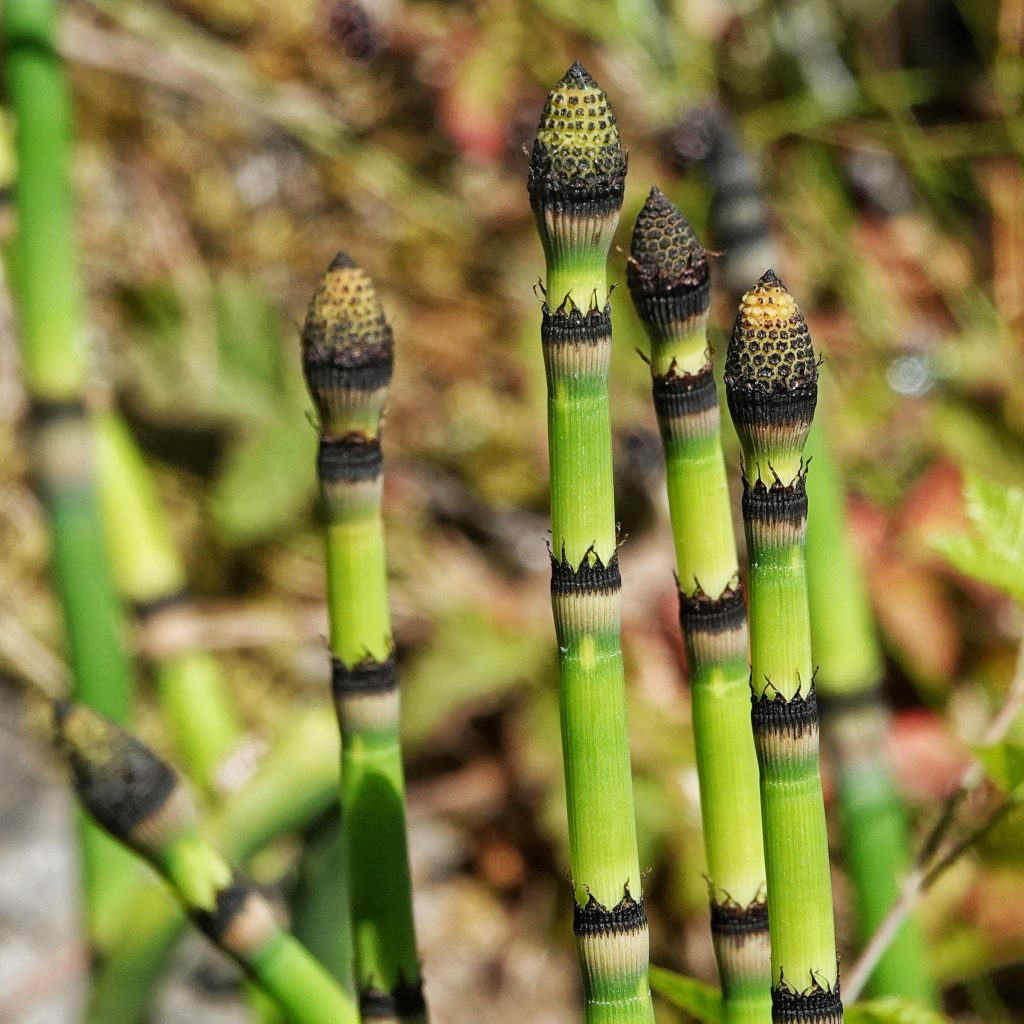
I don’t know the horsetails well, except to say ‘that’s a horsetail’. In fact, when I took these photos it was only because these horsetails looked especially pretty in a little treed swale. I assumed that the lack of whorled branches indicated they were deciduous and had fallen off, and that identification wouldn’t be possible. But, much to my surprise, that absence of branches (which are not deciduous but merely lacking) turned out to be a diagnostic trait that really narrowed the field, and ten minutes of perusing Plants of the Pacific Northwest Coast (Pojar/Mackinnon; 2014) and Mosses, Lichens, and Ferns of Northwest North America (Vitt/Marsh/Bovey; 1988) made me sure that I was looking at Equisetum hyemale.
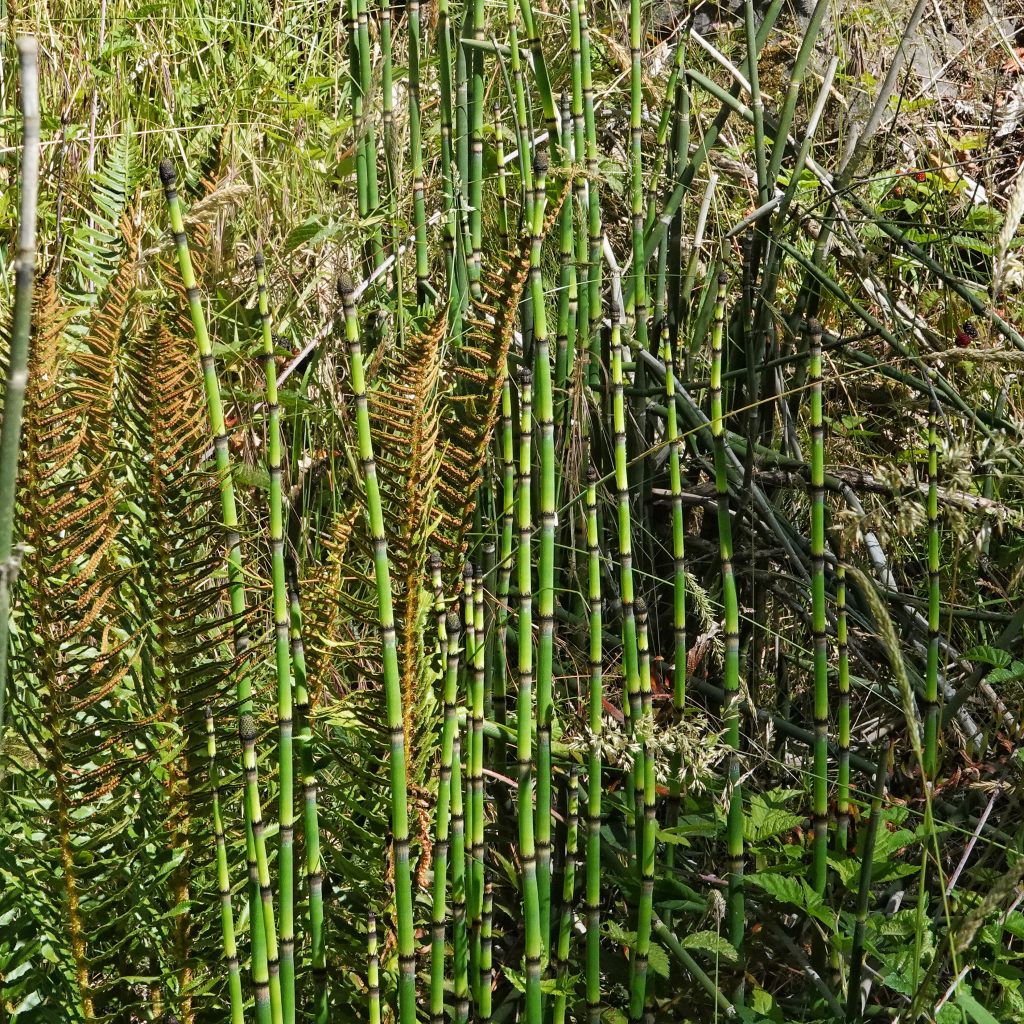
Several members of this family are called scouring rushes (and the most accepted common name for this species is common scouring rush, although it is also called rough horsetail) which is something of a misnomer since these plants are closely related to the ferns (both are in the division Polypodiophyta, all of which reproduce by spores) and are on a completely different, much older, branch of the vascular plants tree from the rushes, which are a flowering plant (Angiosperms, which reproduce using seeds). They are evergreen perennials, so they persist through winter (the origin of their specific epithet hyemale, which means ‘of winter’ in Latin), and are much used in landscaping because of this characteristic, as well as the fact that they are quite striking, providing both texture and contrast, and they thrive in wet conditions that aren’t suitable for many plants.
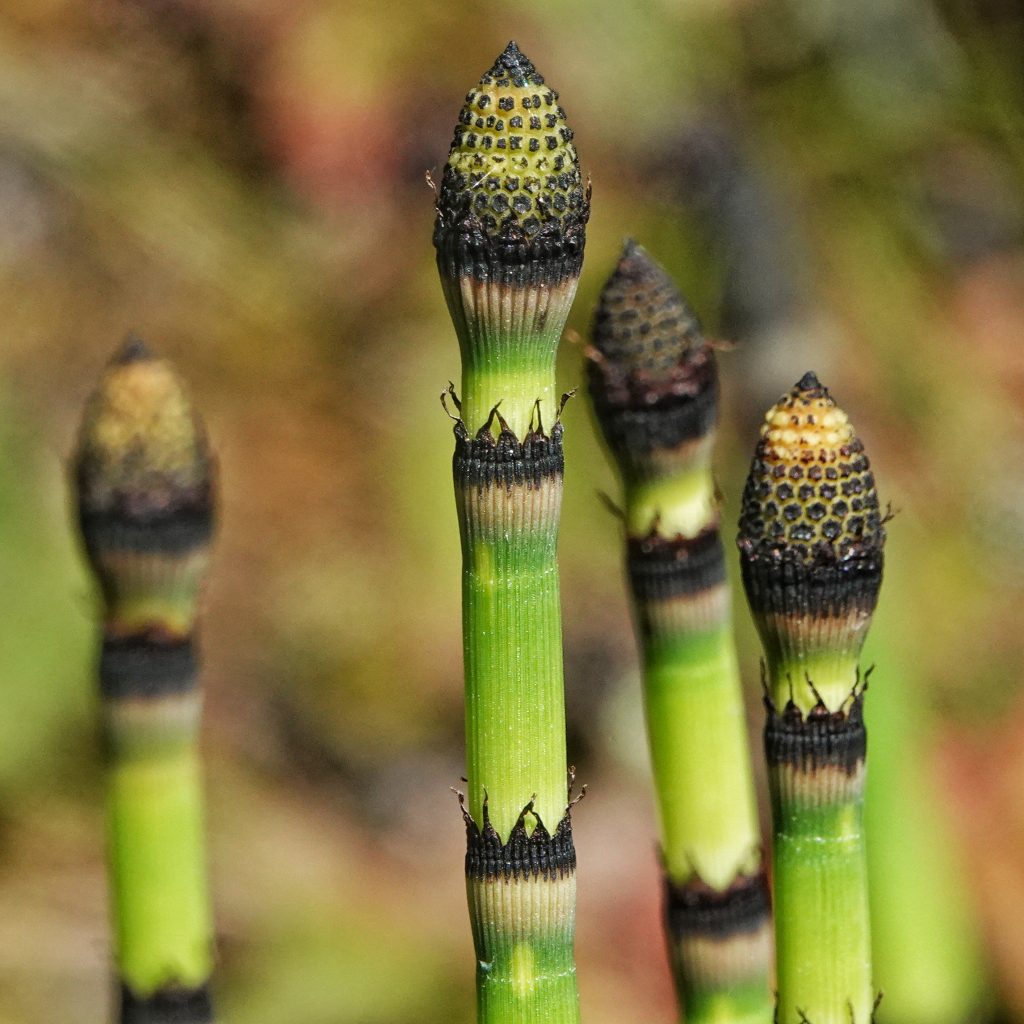
But, because of the silicates embedded in the stems of this species, the scouring part is certainly valid! Europeans used it to hone the reeds of wind instruments, and to scour items made of pewter and wood. Indigenous cultures used dried stalks to smooth and polish bows, arrows, mussel shells, wooden and bone implements, fingernails, pipes, and to clean floors, kettles, pots, and pans. The cones and rootstocks could be dried and used for food (often mixed with salmon eggs). They also had a multitude of medicinal uses for this plant, treating ailments of the kidneys, bladder, prostate, and intestines and used it for menstrual problems and venereal disease. For a more complete list see the Native American Ethnobotany Database.
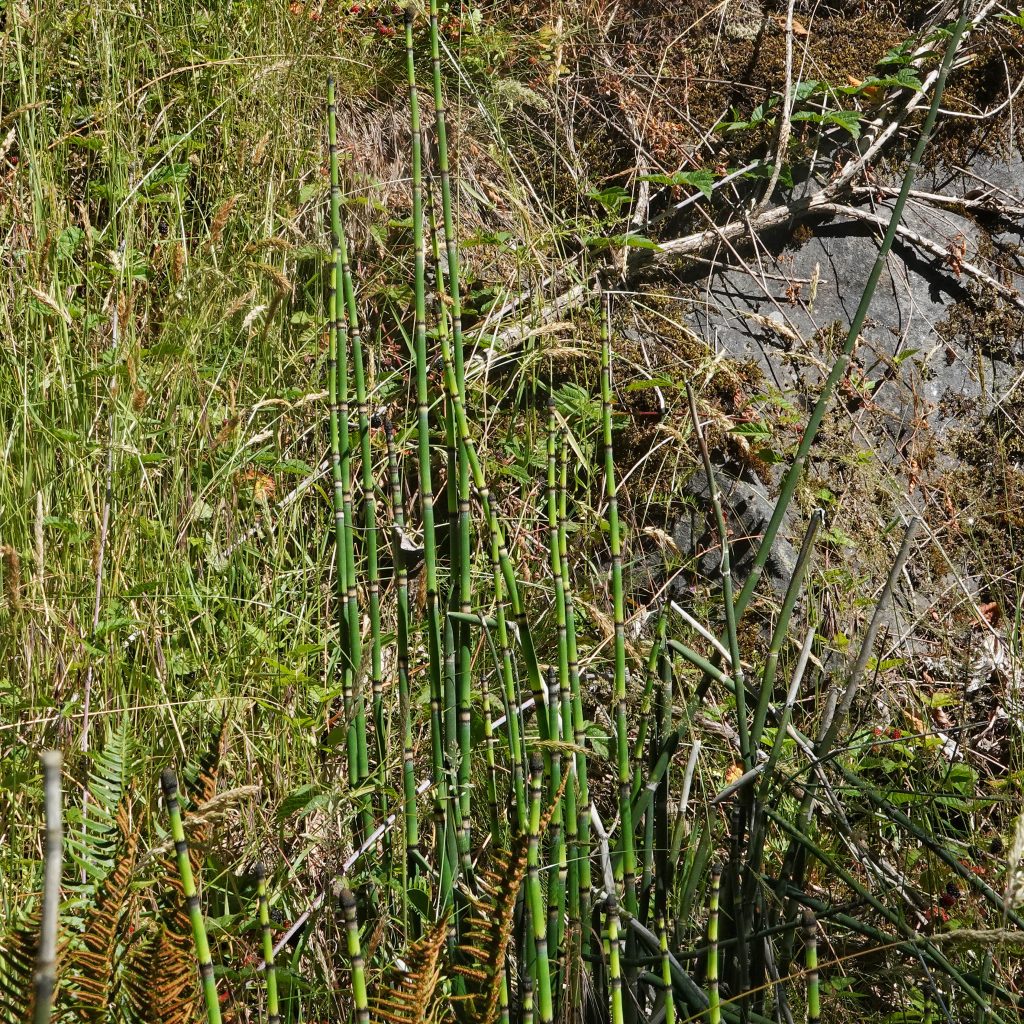
Description-Large (up to 5’) unbranched, evergreen perennial with rough, bluish green stem up to 14mm in diameter which has 18-40 ridges and a central cavity over 1/2 the diameter of the stem; strobili (spore bearing cones atop the fertile stalks) have a pointed tip; sheaths around nodes are ash grey to green with toothed, black bands; does not usually have any whorled branches.
Similar species–Equisetum laevigatum has blunt strobili and is only found east of the Cascades; E. variegatum and E. scirpoides have less than 14 ridges on the stem, and the central cavity is less than 1/3 of the diameter of the stem; other Equisetum in our region have whorled branches; rushes (Juncus) do not have joints.
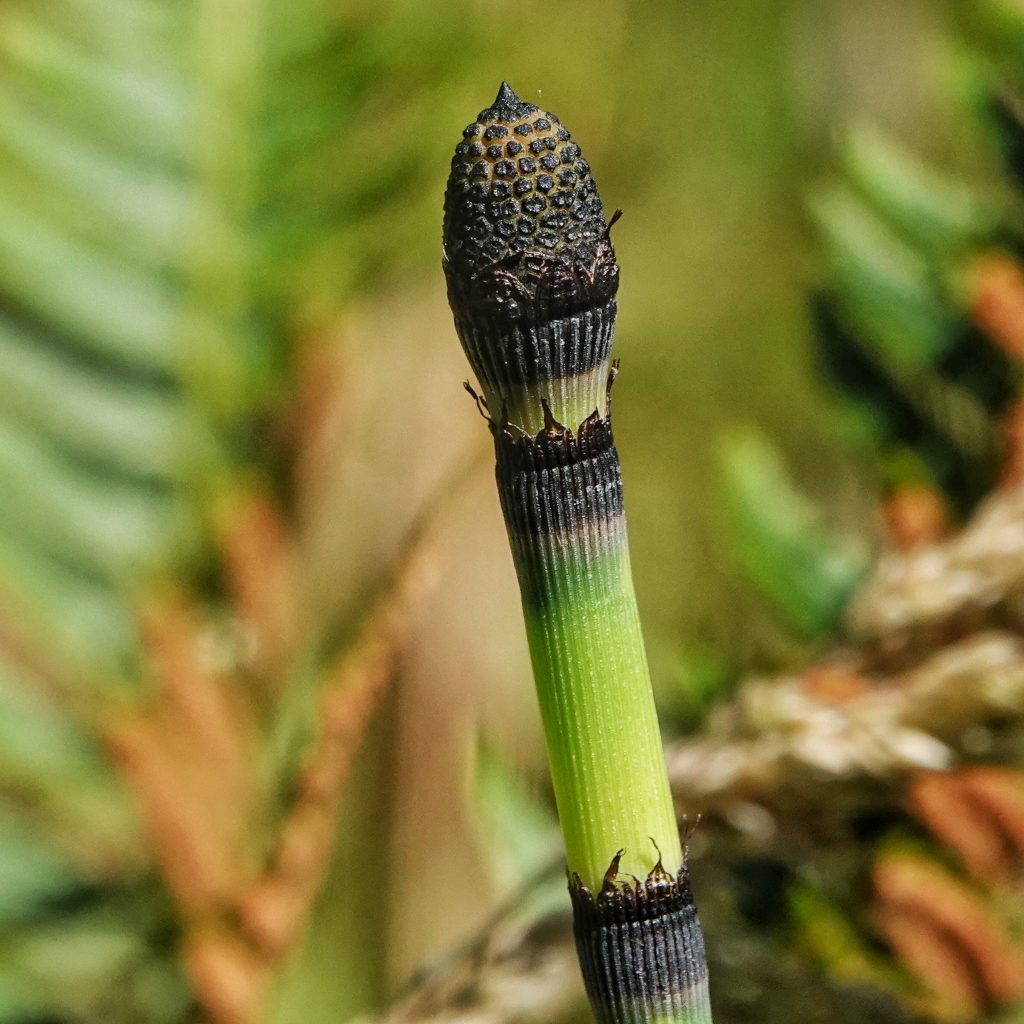
Habitat-Moist to wet (can tolerate standing in water) areas with deep soil, up to 4,000’ elevation.
Range-Holarctic native; found region wide in appropriate habitat in the PNW.
Reproductive timing– Spores are produced in late spring and summer; strobili grow in the spring and wither after sporing.
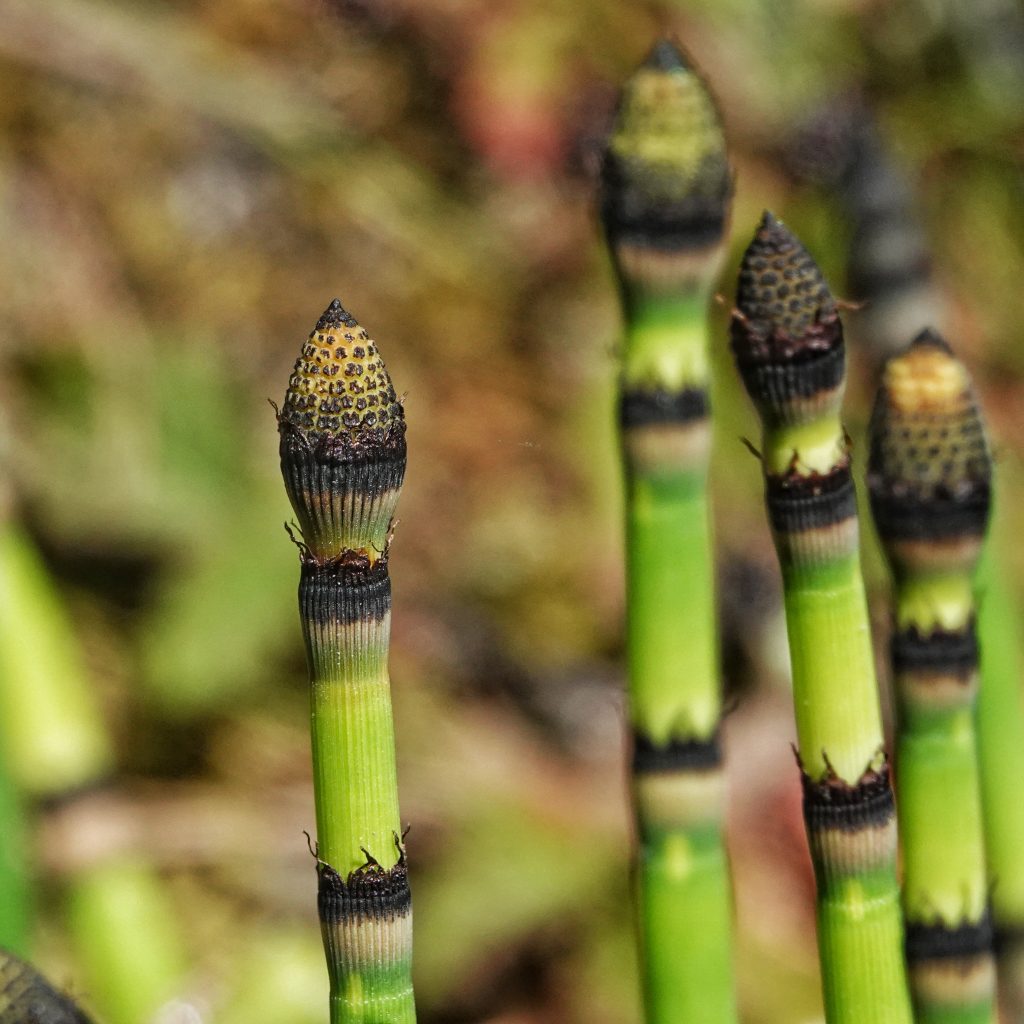
Eaten by-Some flea beetles in the genus Hippuriphila, sawflies in the genus Dolerus, and weevils in the genus Grypus, are known to consume horsetails, but I can find nothing specific for this species; most herbivorous mammals avoid this species because of the rough and unpalatable stems, but some indigenous people actually used it as horse feed.
Etymology of names–Equisetum is from the Latin for ‘horsetail’, which is also the common name for the whole family, and is a bit of a misnomer for this species since it doesn’t have the whorls of branches that give it the appearance of a horse’s tail. The specific epithet hyemale is from the Latin word for ‘of winter’, and refers to the prominence of these evergreen plants in the winter landscape.

Burke Herbarium Image Collection
https://www.missouribotanicalgarden.org/plantfinder/plantfinderdetails.aspx?kempercode=c670
BRIT – Native American Ethnobotany Database
Scouring Rush (Equisetum hyemale affinis)

Beautiful plants, gorgeous structure. But I’d advise caution planting them in the garden, because if you ever decide to get rid of them, it’s *impossible*.
Thanks for sharing that!
I love your thoroughly researched profiles of the individuals of the natural world!
Thank you, Carol!
Fabulous as always!!
Thanks, Bonnie!
Thank you for a thoughtful researched explanation of horse tails. I understand they are ancient plants. Never knew I could scrub with them.